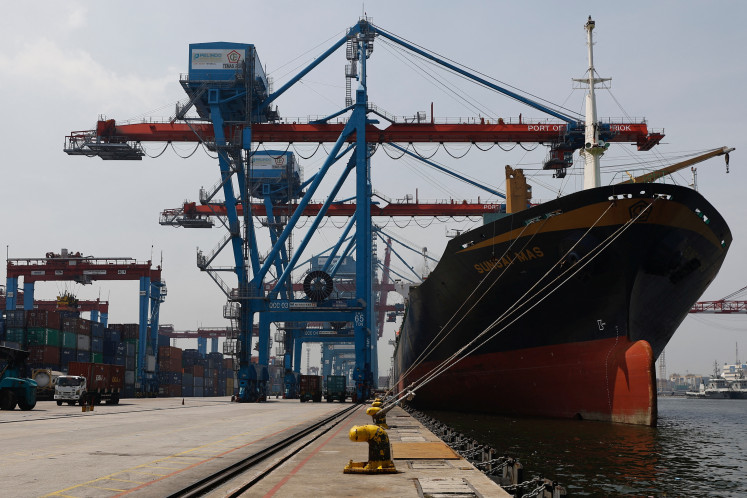Development education and global citizenship
We are small dots on the Earth and even smaller dots in the universe
Change text size
Gift Premium Articles
to Anyone

W
e are small dots on the Earth and even smaller dots in the universe. Yet, each and every dot has a significant role to play, both globally and locally.
Forty years ago, international education scholars started a movement called 'development education,' which later morphed into 'global citizenship'.
In 1975, the UK-based World Studies Project (WSP) was founded by the One World Trust, which defined 'development education' as 'education concerning issues of human rights, dignity, self-reliance and social justice in both developed and developing countries.'
The promotion of understanding the causes of under-development, optimal development and achievement of an international economic and social order is emphasized.
It might take awhile for Indonesia's curricula to adhere to this vision. The basic requirements of honest integrity and good management of the learning environment, which were reflected in problems encountered in the recent national examination, still require strong corrective measures.
However, we need to be aware of the challenges of modern societies in order to participate fully in a globalized world.
It doesn't require learners to go overseas to study like two decades ago, for various learning materials are available for free or with very little cost through online exchanges and collaborations. The digitalization of learning and global influences should be tapped for optimized results. Of course, experiencing a different culture in person would develop better understanding and more empathy, which is highly recommended.
Indonesia, with its overpopulation and strong consumer economy, requires more than education on morality and ethics. It is interesting to note that the latest national curriculum focuses on the study of religion and the religiosity of school subjects.
Today, what we need to survive in the global constellation is a global education that will create global citizens who can participate fully with confidence. We can start with one small step.
According to Annette Gough in 'Global Citizenship as a Contemporary Curriculum Challenge,' the initial definition of 'development education' refers to understandings of individuals' own lives and neighbors; global economic, social and political forces; skills, attitudes and values enabling togetherness in working toward making meaningful changes; and achievement of a just and sustainable world with shared equities.
In short, it is time for us to realize that small dots on earth and in the universe bump into each other and move together ' either with each other or away from each other. Our job is ensuring that we don't bump into each other in a way that destructs the beautiful formation of humankind and nature.
The early model of global education offers four dimensions, as posited by Pike and Selby in Global Teacher, Global Learner: spatial, temporal issues and human potential. This means that both the teacher and the learner are aware of the nature of interdependency between local and global elements, the multitude alternatives for the future, the global issues that must be addressed locally, and the holistic elements of learning. 'Learner' is the preferred term as one might not be registered as a 'student' of an institution but he or she is still learning and, ideally, an individual's learning span lasts a lifetime.
Those four dimensions are expected to shift five types of consciousness: systemic-holistic, perspective differences, health of planet, involvement and preparedness for appropriate action, and process orientation with continuous activities ' not linear. Applied classroom activities would require an understanding of the interconnectedness of elements that shape society. After all, the fate of the future is mostly in our hands today.
Bourn and Hunt introduced eight dimensions, which are similar to UNESCO's eight key action themes: global citizenship, interdependence, social justice, conflict resolution, diversity, values and perceptions, human rights and sustainable development.
Social justice, conflict resolution, diversity and human rights are intertwined, crucial in a peaceful and non-violent society. We need to foster meaningful activities that will provide a foundation for long-term peace.
Global citizenship education teaches learners how to think and act on a global level, to understand and have empathy that we are an integral part of the people of the world, thus a single action locally comes with global consequences. It also infers that peace comes with critical thinking, empathy and a strong commitment to social justice and equality. It can be achieved through a curriculum emphasizing those elements.
At last, as Nobel laureate Aleksandr Solzhenitsyn once said: 'It's a universal law ' intolerance is the first sign of inadequate education. An ill-educated person behaves with arrogance and impatience, whereas truly profound education breeds humility.'
We all are, after all, just dots in the universe.
The writer is a columnist based in California.









